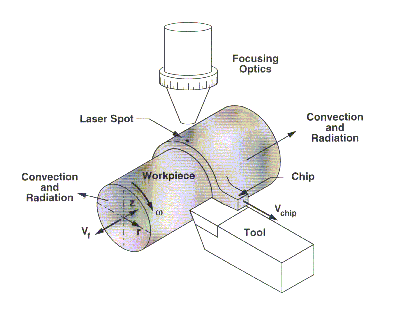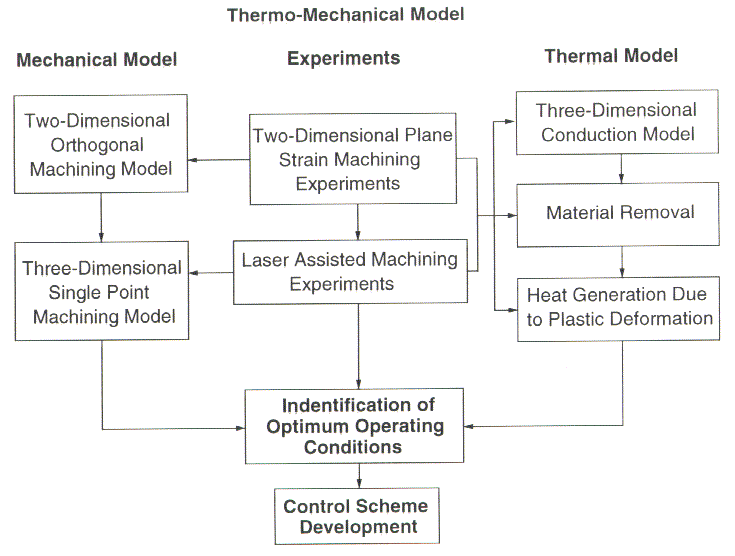 Laser Assisted Machining of Ceramics (LAM)
Laser Assisted Machining of Ceramics (LAM)
This project is to develop an economical shaping process
for ceramics and other difficult-to-machine materials. The project is to
establish the scientific basis for LAM and demonstrate its potential benefits.
The work involves analytical modeling of thermo-mechanical behavior of
the material during LAM and experimental investigation of cutting mechanisms
and sub-surface
damage.
The potential benefits include a significant reduction in the cost of producing ceramic parts, increased productivity and low initial cost. An experimental system has been constructed by combining a 1.5 KW CO2 laser and a 40 HP CNC lathe. For the optimal design and control of the process, complete thermal and mechanical models of the process is under development as well as in-process temperature measuring systems.
Implementation of LAM with silicon nitride parts resulted in tool life
up to 40 minutes, excellent surface finish around 0.4 micron in Ra, little
sub-surface damage (within a few microns), no visible cracks and compressive
residual stresses. Other investigated materials include mullite, Zirconia,
and metal matrix composites, which all resulted in successful outcome.



For further information, visit the lab site.
![]()
[ Welcome ] [ Research ] [ Education ] [ Laboratories ] [ Collaboration ]
© 2000 Purdue ME Manufacturing Laboratories
Last modified by Brian Bolek, 26 February 2000.